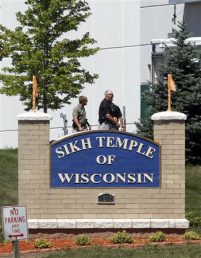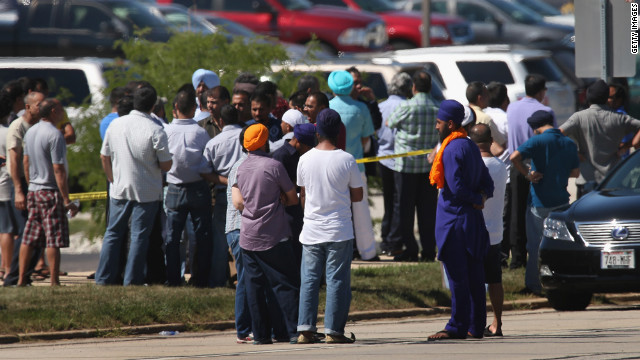It feels terrible to admit it. When I saw this photograph in the paper today, my instant reaction was, “Oh, so they had to have someone from the North East even to show rains in Mumbai.” As it turned out, I was wrong. These were described as “tourists”.
My immediate reaction tells us something, aside from the fact that people from the Oriental regions too may be mistaken for those in the North East, is that the media is going over the top to portray and project everything possible about the region. It is like dusting something from the attic and placing it on the mantelpiece. There is no attempt at trying to even examine it closely, explore its history, and look at the cracks it has suffered when it was consigned to the dark corner.
Today, we have seen how damaging stories can be. The term “chinki” that many people use for the Chinese or those with slanted eyes is being put to the test of a politically correct grinder. People of Sikkim look like that. Nepalis do. And what about those in Darjeeling who have been demanding Gorkhaland? Why is no one interested in that? Why are we suddenly concerned about what they are called? Have we never made such errors of judgment based on physical appearance?
This sort of quick-fix concern tourism does nothing for the people, educates no one, and enlightens little. Armed with a map, the “seven sisters” are not even given distinct identities that they fought for amongst themselves. Have people already forgotten the ULFA that targeted tea plantation owners, mainly Marwaris from Kolkata? Disaffection with Bangladeshis is not new, but it is not the only problem. (Read Don't Blame the Immigrant)
Film director Kalpana Lajmi, who was the late filmmaker, singer, poet, political activist Bhupen Hazarika’s longtime partner, was interviewed recently by The Times of India about the violence in the North East. She lived there for long periods. Why did she never speak before about the problems that range from “they’re often dismissed off as ‘chinkis’” to “it came as a shock to me when I realized the magnitude of the issues only after violence spilled over at Azad Maidan (Mumbai)”?
She makes dangerous simplistic statements that are no better than the rumour-mongers:
Has she read anything about the history? She is reaching such conclusions because that is what some people in the media and some political parties are doing. It is so conniving that she, sitting in Mumbai now, is talking about communalism. Did she not feel victimised when she was there? Did Bhupenda ever tell her any such thing?
And with as much alacrity as she effectively grants Bangladeshis local status, she contradicts it:
Whose feelings is she referring to? Has she gone there on an assignment recently? When she lived there, did she worry about this? If as she suggests a Bangladeshi who has lived there for 50 years is not a Bangladeshi, then is she implying that someone who has crossed over years later, maybe even recently, will contest elections and become the chief minister? Not only is her surmise ridiculous, she reduces the people of the North East, who have, despite the centre’s callous casual attitude towards them, never cowed down.
So dumb is the discourse that the interviewer asks her, “Are you planning to do anything to bring peace back in the region?” Her reply:
Yet, she has this crystal ball or third eye that tells her some immigrant can become chief minister. She believes that her chosen gang will bring peace, forgetting that two of them are in politics and politically sharp.
I do not know for how long this party with the North East will last. It is being played out in the most absurd manner and doing nothing for the states. We have already discovered the snowball effect of an ‘exodus’.
Political parties will make a killing of it during the elections. Will the people benefit?
MC Mary Kom, the boxer from Manipur who won the Olympic medal, apologised for not getting more than a bronze. She was feted for her gesture. This infuriates me. How many golds and silvers have we got?
Now Bollywood has jumped on the bandwagon. Sanjay Leela Bhansali wants to make on her life. It is an amazing life, no doubt, but this is not the first time she has participated in an international competition. It is understandable that she sees it positively. As she told the BBC:
The North East ought to be seen as much as mainland as Maharashtra or Delhi. Giving her example is like making an example of her, to be always on test, to struggle and to to triumph. Success is the barometer for acceptance.
This and the whole human interest angle to her story is part of the patronising attitude we have towards the North East. It started with politicians, it buffered ethnic strife, and now it has reached the pearly gates of our elite intellectuals with the memory span of a few minutes.
(c) Farzana Versey
- - -
Two of my earlier pieces:
Manipur's fate and the North East States
Will Gorkhaland become a reality?
My immediate reaction tells us something, aside from the fact that people from the Oriental regions too may be mistaken for those in the North East, is that the media is going over the top to portray and project everything possible about the region. It is like dusting something from the attic and placing it on the mantelpiece. There is no attempt at trying to even examine it closely, explore its history, and look at the cracks it has suffered when it was consigned to the dark corner.
Today, we have seen how damaging stories can be. The term “chinki” that many people use for the Chinese or those with slanted eyes is being put to the test of a politically correct grinder. People of Sikkim look like that. Nepalis do. And what about those in Darjeeling who have been demanding Gorkhaland? Why is no one interested in that? Why are we suddenly concerned about what they are called? Have we never made such errors of judgment based on physical appearance?
This sort of quick-fix concern tourism does nothing for the people, educates no one, and enlightens little. Armed with a map, the “seven sisters” are not even given distinct identities that they fought for amongst themselves. Have people already forgotten the ULFA that targeted tea plantation owners, mainly Marwaris from Kolkata? Disaffection with Bangladeshis is not new, but it is not the only problem. (Read Don't Blame the Immigrant)
Film director Kalpana Lajmi, who was the late filmmaker, singer, poet, political activist Bhupen Hazarika’s longtime partner, was interviewed recently by The Times of India about the violence in the North East. She lived there for long periods. Why did she never speak before about the problems that range from “they’re often dismissed off as ‘chinkis’” to “it came as a shock to me when I realized the magnitude of the issues only after violence spilled over at Azad Maidan (Mumbai)”?
She makes dangerous simplistic statements that are no better than the rumour-mongers:
“Friends in Assam say that they have lived in harmony with the Muslims, and that the quarrel is between the Bodos and the immigrant who have outnumbered them. I tell them it is a communal issue as it is a fight between the Muslims and non-Muslims. How can you even call them Bangladeshi if they have lived in India for over 50 years?”
Has she read anything about the history? She is reaching such conclusions because that is what some people in the media and some political parties are doing. It is so conniving that she, sitting in Mumbai now, is talking about communalism. Did she not feel victimised when she was there? Did Bhupenda ever tell her any such thing?
And with as much alacrity as she effectively grants Bangladeshis local status, she contradicts it:
“There is also a feeling that one day a Bangladeshi immigrant may take over as the chief minister of a northeastern state.”
Whose feelings is she referring to? Has she gone there on an assignment recently? When she lived there, did she worry about this? If as she suggests a Bangladeshi who has lived there for 50 years is not a Bangladeshi, then is she implying that someone who has crossed over years later, maybe even recently, will contest elections and become the chief minister? Not only is her surmise ridiculous, she reduces the people of the North East, who have, despite the centre’s callous casual attitude towards them, never cowed down.
So dumb is the discourse that the interviewer asks her, “Are you planning to do anything to bring peace back in the region?” Her reply:
“I am planning to ask CM Tarun Gogoi to request artistes like Shabana Azmi, Javed Akhtar and Mahesh Bhatt to make the people feel at home. There is a need to make them understand that violence is not the solution. There is a need to get leaders and NGOs with no political ambitions to come forward. There is a need to decide once again the cut-off date for newer immigrants. But I still feel it is a deep-rooted problem as one cannot differentiate between the local and the immigrant.”
Yet, she has this crystal ball or third eye that tells her some immigrant can become chief minister. She believes that her chosen gang will bring peace, forgetting that two of them are in politics and politically sharp.
I do not know for how long this party with the North East will last. It is being played out in the most absurd manner and doing nothing for the states. We have already discovered the snowball effect of an ‘exodus’.
Political parties will make a killing of it during the elections. Will the people benefit?
MC Mary Kom, the boxer from Manipur who won the Olympic medal, apologised for not getting more than a bronze. She was feted for her gesture. This infuriates me. How many golds and silvers have we got?
Now Bollywood has jumped on the bandwagon. Sanjay Leela Bhansali wants to make on her life. It is an amazing life, no doubt, but this is not the first time she has participated in an international competition. It is understandable that she sees it positively. As she told the BBC:
“This film will help bridge the gap between people of the Indian mainland and those from the north-eastern states.”
The North East ought to be seen as much as mainland as Maharashtra or Delhi. Giving her example is like making an example of her, to be always on test, to struggle and to to triumph. Success is the barometer for acceptance.
This and the whole human interest angle to her story is part of the patronising attitude we have towards the North East. It started with politicians, it buffered ethnic strife, and now it has reached the pearly gates of our elite intellectuals with the memory span of a few minutes.
(c) Farzana Versey
- - -
Two of my earlier pieces:
Manipur's fate and the North East States
Will Gorkhaland become a reality?


















